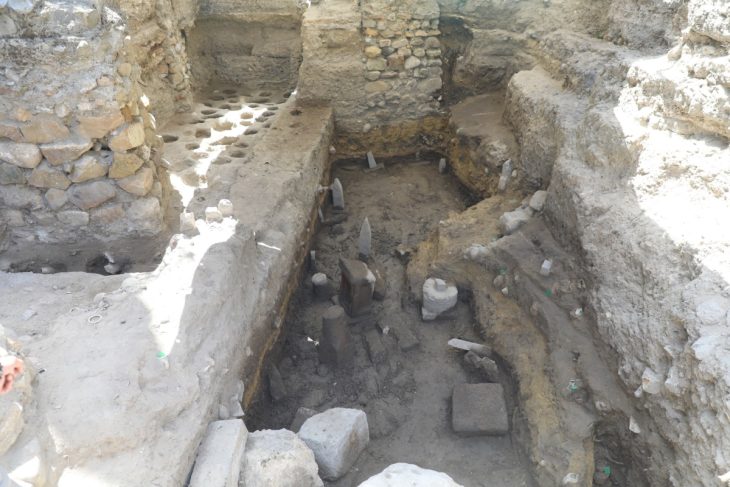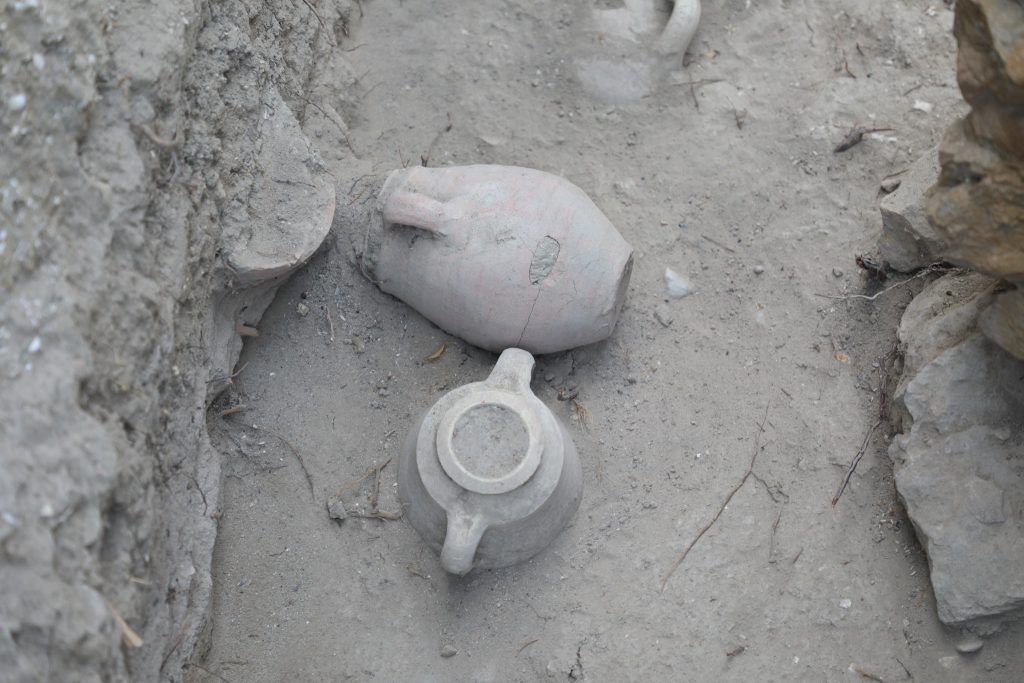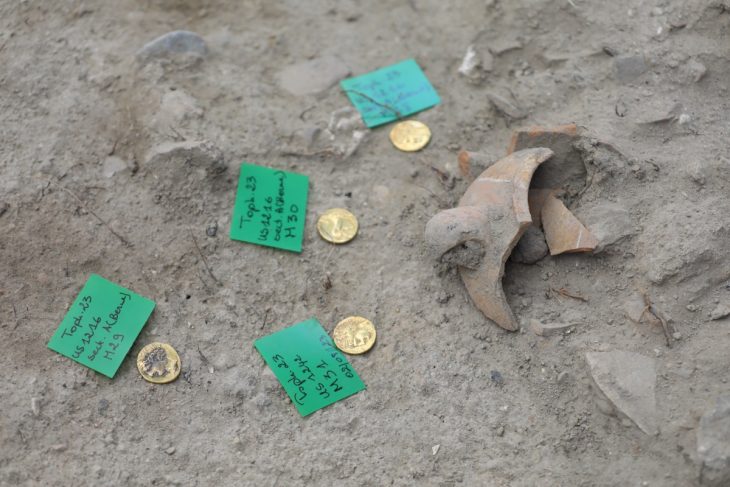Archaeologists uncovering the ancient sanctuary of Tophet in Carthage have made a remarkable discovery, offering fresh insights into the religious practices of this historic civilization. Tunisia’s Ministry of Cultural Affairs recently revealed the findings in a news release, detailing the unearthing of five gold coins dating back to the 3rd century BC, alongside tombstones and urns containing the remains of animals, infants, and premature babies.
Carthage, founded by Phoenician settlers approximately 2,900 years ago, stands as a monumental archaeological site perched atop a hill overlooking the Gulf of Tunis and its encompassing plains. Once a thriving metropolis of Punic civilization in Africa, and later serving as the capital of the Roman province of Africa, Carthage holds significant historical and cultural importance as a prominent commercial hub of antiquity.
The Sanctuary of Tophet within Carthage featured distinct areas dedicated to religious rituals, including a shrine for sacrificial offerings and a cemetery for interring the deceased. The site’s significance is underscored by its association with ancient practices, including the controversial topic of child sacrifice.

During excavations conducted by a French archaeological team in 1921, an astonishing discovery of over 20,000 urns was made, each containing the ashes of a child, predominantly newborns but also including children up to the age of four. While historical accounts attest to the Carthaginians’ ritualistic use of child sacrifice, interpretations of the findings vary among scholars, prompting ongoing debates and investigations into the nature of these ancient ceremonies.
The recent unearthing of rare gold coins, each bearing the likeness of Tanit, an ancient goddess symbolizing fertility and motherhood, adds a layer of complexity to the religious practices observed at Tophet. These coins, measuring approximately an inch in size, were likely offerings made by affluent worshippers to honor the principal deities of the sanctuary, namely the god Hammon and the goddess Tanit.

Professor Syed Imad bin Jarbaniyah, an esteemed researcher in Archaeological and Historical Studies and Director of the National Institute of Heritage’s Department of Programming, Cooperation, Publishing, and Training, commented on the significance of the discovery. “These gold coins, which were recently discovered, reflect the wealth of that historical period and confirm Carthage’s cultural value,” he remarked, highlighting the archaeological richness of Carthage’s heritage.
The Sanctuary of Tophet in Carthage stands as a testament to the ancient religious beliefs and practices of the Punic civilization. Its classification among the most significant Punic monuments in Carthage and the western Mediterranean region underscores its importance as a sacred space devoted to venerating the gods Tanit and Baal Hammon, offering valuable insights into the spiritual and cultural tapestry of ancient Carthaginian society.
